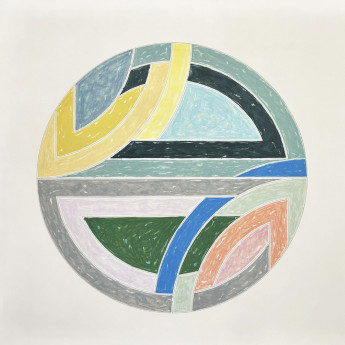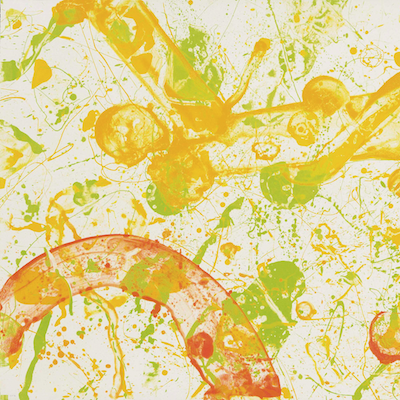
Details
Artist
Styles
Extroflexione on aluminum - Hand signed (inscribed) and numbered // Enrico Castellani’s Estroflesso (2008) exemplifies his pioneering approach to spatial art. This work, created using extroflexion on aluminum, features a rhythmic grid of raised and indented points forming a spiraling square pattern. The interplay of light and shadow across the metallic surface enhances the three-dimensionality of the composition, evoking a sense of depth and movement. Castellani’s technique transforms the traditionally flat canvas into a dynamic object that interacts with its environment, reflecting his focus on breaking boundaries between painting and sculpture. Measuring 31 x 23.5 cm, this piece is a refined example of Castellani’s ability to merge minimalism with tactile complexity.
Estroflesssso, 2008
form
Medium
Size
31 x 23.5 cm
- Inches
- Centimeters
Edition
Price
Details
Artist
Styles
Extroflexione on aluminum - Hand signed (inscribed) and numbered // Enrico Castellani’s Estroflesso (2008) exemplifies his pioneering approach to spatial art. This work, created using extroflexion on aluminum, features a rhythmic grid of raised and indented points forming a spiraling square pattern. The interplay of light and shadow across the metallic surface enhances the three-dimensionality of the composition, evoking a sense of depth and movement. Castellani’s technique transforms the traditionally flat canvas into a dynamic object that interacts with its environment, reflecting his focus on breaking boundaries between painting and sculpture. Measuring 31 x 23.5 cm, this piece is a refined example of Castellani’s ability to merge minimalism with tactile complexity.
- Recently Added
- Price (low-high )
- Price (high-low )
- Year (low-high )
- Year (high-low )
What is Tachisme?
Tachisme is a French abstract painting style that gained popularity between 1940 and 1950, often seen as the European counterpart to Abstract Expressionism. However, there are stylistic differences between the two. Tachisme, which emerged from Art Informel, rejected geometric abstraction in favor of more intuitive and spontaneous expression. It was a reaction against the structured forms of Cubism and is closely related to Informalism. Tachisme emphasizes gestural brushwork, irregular forms, and a focus on the process of painting itself.













